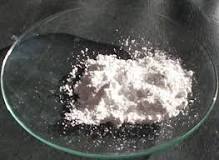Uncategorized
Most widely used pigment in paint manufacturing industry – Titanium Oxide (TiO2)
Titanium dioxide, also called titania, (TiO2), a white, opaque, naturally occurring mineral existing in a number of crystalline forms, the most important of which are Rutile and Anatase. Anatase TiO2 changes to Rulite above 800 °C.
Titanium dioxide pigment is a fine white powder. When used in paints, it provides for maximum whiteness and opacity. … It does this more effectively than any other white pigment. Today, Titanium dioxide pigment is by far the most important material used by the paints manufacturing industry for whiteness and opacity.
These naturally occurring oxide forms can be mined and serve as a source for commercial titanium. Titanium dioxide is odourless and absorbent. Its most important function in powder form is as a widely used pigment for lending whiteness and opacity.

Titanium Oxide
Hydrogen-Induced Cracking (HIC)
🔹 What is HIC?
Hydrogen-Induced Cracking is a type of internal cracking that occurs in metals, especially carbon steel, due to the absorption and accumulation of atomic hydrogen.
🔹 How It Happens:
-
Hydrogen atoms enter the metal (e.g., during corrosion in sour service environments containing H₂S).
-
Hydrogen atoms diffuse into the steel and accumulate at trap sites like inclusions or laminations.
-
This leads to the formation of internal pressure from molecular hydrogen (H₂), which creates micro-cracks.
-
Cracks typically form parallel to the rolling direction of the steel.
🔹 Key Characteristics:
-
Cracks are blister-like or stepwise.
-
Occurs below the surface, not on external welds.
-
Common in wet H₂S environments (e.g., pipelines, pressure vessels).
-
No external stress is needed — it can occur even without applied load.
🔹 Commonly Affected Materials:
-
Carbon and low-alloy steels, especially with high sulfur content or non-metallic inclusions.
🔹 Prevention Methods:
-
Use HIC-resistant materials (e.g., low-sulfur steels, vacuum-degassed steel).
-
Apply inhibitors in corrosive environments.
-
Use cladding or coating (e.g., stainless steel overlays).
-
Conduct NACE TM0284 testing to assess HIC susceptibility.
🔹 Testing & Detection:
-
Ultrasonic Testing (UT).
-
Metallography on test samples.
-
Hydrogen permeation tests.
-
NACE standards guide testing protocols.